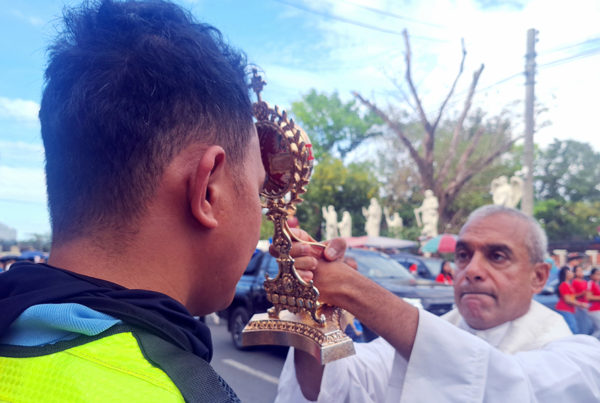Historian completes translation in Pangasinan
KATIPUNAN’S CORONEL QUINTOS’ WAR MEMOIRS
(First Installment)
THE translation of a century-old war memoir of a Katipunan colonel originally written in Pangasinan to Pilipino, depicting his exploits during the war against Spanish and American colonizers, is finally off the press.
Melchor Orpilla, a social studies professor at the Pangasinan State University-Bayambang Campus, finished the translation of the book ‘Sipi Awaray Gelew diad Pilipinas (Revolucion Filipina): Saray agawgawad Pangasinan tan Zambales nen taon iran 1897 angad 1900. Bakal na Pilipino tan Kastila, tan Bakal na Pilipino tan Estados Unidos’, from the original book written by Felipe Quintos, then a high-ranking Katipuneros in Pangasinan.
The 85-page book, recently published by the National Commission for Culture and the Arts this year and 1,000 copies features both the original version in Pangasinan and the translation in Pilipino.
The copies are set for distribution to libraries in towns and cities in Pangasinan, La Union, and Zambales mentioned in Quintos’s memoirs.
Orpilla, who worked tirelessly for five years translating Quintos’s detailed war memoirs, felt rewarded as his fruits of labor have finally been published.
With Orpilla’s Pilipino translation, . . Pangasinenses and Zambaleños will have an accurate description of how Filipinos recaptured Western Pangasinan (then Northern Zambales) from the Spaniards — something Dr. Rosario M. Cortes, renowned historian who wrote three books on Pangasinan’s history, was not able to discuss deeply in her works.
But who is Felipe Quintos, and how important is his work in redefining the Pangasinan historical landscape?
Coronel Ginebra
Before being known in the revolution as ‘Coronel Ginebra’, Quintos was living a quiet life.
He was born in Lingayen town, but met and married his wife, Lorenza Raroque, of Alaminos, where they eventually settled. According to Orpilla, Raroque belonged to the principalia class.
On November 3, 1897, Roman Manalang, after receiving his nombramientos (appointment) as Presidente Generalisimo, gathered his most trusted allies from the 14 towns in Northern Zambales in a shanty in Sadsaran, Alaminos, where he established a Katipunan chapter in the area. Quintos was appointed a colonel, and given the codename ‘Ginebra’.
Manalang and Quintos have known each other, as they were both married to women from Alaminos.
For four months, Quintos and others secretly recruited allies in the countryside, and established municipal chapters of the Katipunan, away from the prying eyes of Spanish colonizers.
On March 7, 1898, the plan to liberate Northern Zambales came to fruition. One by one, the towns of Alaminos, Agno, Alos (now a barangay of Alaminos City), Anda, Bani, Bolinao, Infanta, San Isidro Labrador, Lingayen, San Isidro Potot (now Burgos town), Sual, Salasa (now a barangay of Bugallon), Dasol, and Zaragoza (now a barangay of Bolinao town) were retaken from the Spanish forces.
Their numbers grew and began to assist fellow Katipuneros in other parts of Pangasinan, and eventually in La Union province.
When the dusts of revolution settled, Quintos opted to return to his simple life with his family in Alaminos.
This, however, was not meant to last. The American forces took over. Manalang and others — including Quintos – heeded the call to arms and were back in the frontlines.
On November 12, 1899, when President Emilio Aguinaldo was in Bayambang town, he transformed the Philippine Republican Army into guerilla forces in a bid to counter the sequential advances of the Americans.
Quintos, according to Orpilla, may possibly have stopped his involvement in the war against the Americans, because there was a notable change in the ‘tone’ of Quintos’s writing, progressing more into a third-person account, rather than his earlier chapters’ first hand narration.
As the Americans hunted Aguinaldo down who was on the run, and eventually established a local government, Quintos evidently returned to his peaceful, quiet life and began compiling his war memoirs.
His book was then published in 1926 at the Gumawid Press in Lingayen town.
Resurgence of a piece of history
Orpilla, a passionate man of history, has been compiling books related to Pangasinan.
As he was writing a local history book about Alaminos, Orpilla noticed the many times author Felix Montemayor, one of his sources, cited ‘Felipe Quintos’ and his work.
Inspired to find Montemayor’s sources, Orpilla went on a search for Revolucion Filipina in libraries in Pangasinan. He found no such book.
About to give up, he searched the Internet for answers, and found the book in the most unlikely of all places. It was in a digital library created and maintained by the University of Michigan. (It appears a copy of Quintos’s book may have been included among the war spoils sent to the USA).
Inspired by the never-before-heard historical accounts on the Western Pangasinan revolution, it was then when Orpilla decided to translate the book.
As he delved deeper in the translation of the digitized copy, Orpilla’s son, John Joseph Isaiah, found a possible hard copy ‘sequel’ to Quintos’s work in the UP Library. The compilation was also titled the same, but written in Spanish.
As the younger Orpilla skimmed through the worn-out pages, he found out that while Quintos’s first book cited his accounts during the Revolution, the second work focuses on the accounts during the Filipino-American War.
The younger Orpilla found Quintos’s another magnum opus, as it appears that it was a manuscript, but went unpublished due to unknown reasons.
Orpilla is set to translate the sequel soon. (To be continued). (Ahikam Pasion)








